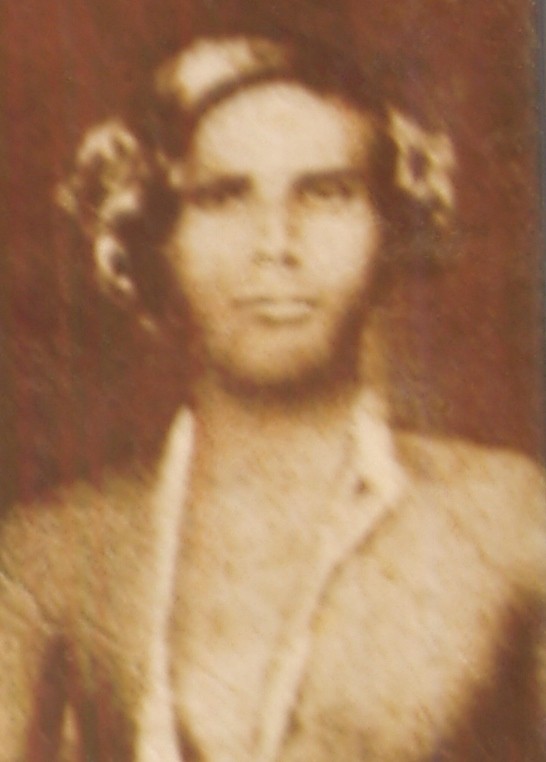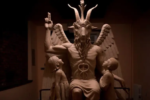SARADIEL: ROBIN HOOD OF SRI LANKA

Bandit or Rebel?
A stage-coach, carrying bags full of money and mail, was rumbling along a meandering road in a rustic mountainous country setting in the 19th century Sri Lanka. The horses, all of a sudden, started to neigh unceasingly and ominously and their onward journey was brought to a halt abruptly by ropes that had been tied across the road. A gang of armed men, led by a slim but agile youth, dashed onto the road unawares and held the spellbound travellers at gunpoint. On plundering the horse carriage of all its money and even arms, the bandits disappeared into their rocky wilderness with lightning speed.
The name of the youth was Saradiel, nicknamed “Utuwankande Sura Saradiel” or the “Hero of the Utuwan Mountain”. “Utuwan” is a corruption of the word “Otuwan” (otuwa in Sinhalese means “camel”). The crag, the hide-out of the outlaw, profiled against the sky, has the shape of a camel hump. Anyone, travelling today between Kandy and Colombo, will see this “Camel Mountain”, towering in the distance at the town of Mawanella, near Kegalle, 78 km northeast of Colombo. Although the British colonial rulers, ultimately, apprehended Saradiel who was absconding and he ended up on the gallows, haunting memories of this legendary figure have lingered to this day among the old-timers of Utuwankande. The villagers, who were against the British rule and their local supporters, regarded Saradiel not as a bandit, but as a hero who distributed much of the stolen money generously among the poor. When the colonial authorities were trying to arrest him, the villagers helped Saradiel to escape.

Deekirikevage Saradiel was born on 25th March 1832 to Adasi Appu, a Catholic carter and merchant from Chilaw and Pichohamy, a Buddhist lady from Utuwankande, as the eldest of five children. By nature, he was mischievous and stubborn and he could not be disciplined. Having received his primary education at village temples, he went to Slave Island (Colombo 02) to work as a barrack boy among Malay soldiers. There Saradiel learnt the art of wielding firearms but could not stay there for long, for he was dismissed for stealing silver spoons of his master. Before leaving the place, he took several firearms with him.
Saradiel was accused of killing a rich Tamil merchant named Natakoti Chettiar and arrested, yet he was released due to lack of evidence. After a robbery at Molligoda Walauwa (a feudal manor house of a native headman) he left the area and went to his father in Chilaw, but the father refused to harbour his son who was hiding from the law enforcement authorities.
Then Saradiel was arrested at a place near Negombo for stabbing a police informant. He was produced before the court in Colombo to stand trial for murder, yet he managed to escape from the prison whereupon he sought asylum in Utuwankande, but was constantly haunted by fear of discovery by the police.
Then, in December 1862, Saradiel was arrested anew and while being taken as a prisoner in a bullock-cart, he escaped once again, seeking refuge on the hill top of Utuwankande. From his lofty and secret hide-out on the summit of the mountain he had a commanding view of the surrounding land below, permitting him to waylay stage-coaches carrying money. It is said that there was a ledge on this mountain top across which he leapt into his unseen cave.
An interesting folktale talks about the honesty of this highwayman who was a friend of the poor: one day Saradiel chanced to meet an old woman carrying a bag of 500 coins as dowry for her daughter. With her permission Saradiel, going out on a gambling spree, took away the money, promising her to return it after winning. He kept his promise on the following day, returning the money to the woman with 500 coins more as his present for her daughter’s dowry and wedding expenses.
According to folklore, Saradiel was addicted to gambling and drinking toddy, a kind of liquor, which is the fermented sap of tropical palms. It is said that village lasses loved and adored him and his romantic exploits to satiate his sensual desires have been talked about.
Although the colonial police combed the mountainous region to capture Saradiel alive, they failed in their attempts and therefore offered a princely reward of 150 pounds for his head and that of his childhood friend Mammale Marikkar, his accomplice throughout the years.
Sirimala, a member of his gang, became a police informant and betrayed Saradiel, beguiling him into entering a house where police were waiting for him. Saradiel was found with Mammale Marikkar. First Sgt. Ahamath shot Saradiel and wounded him. Marikkar shot constable Shaban and killed him. He was the first Sri Lankan policeman to be killed on duty. Although the bandits tried to escape, they finally realised that their resistance would be futile and hence the duo surrendered. This incident occurred on 21st March 1864 and the Police Day of Sri Lanka falls on this day each year in commemoration of the event. By the roadside beyond Mawanella, a monument stands today with words etched on it, saying that police constable Shaban gave his life near this spot in an act of gallantry that led to the immediate arrest of Saradiel who was on the run evading the law.
The two were tried by an English-speaking jury and found guilty. They were publicly hanged on 07th May 1864. Many were present to see the execution and Saradiel is said to have addressed the crowd before going to the gallows.
A legend has also circulated that Saradiel was wearing an amulet on his arm containing “Henaraja Thailaya” (a kind of potent oil) that made him invisible and bullet-proof. It is said that on that fateful day of his arrest he was not wearing that amulet.
Today the saga of the brigand named ‘Saradiel’ is re-enacted at the ‘Saradiel Village’, located at the foothills of Utuwankande. A visitor to this village can enjoy a guided tour which will take one through the life of this notorious outlaw from his childhood until execution with life-size sculptures also bringing to life the important personalities of the colonial era.
Due to the similarity in the dauntless exploits of ambushing stage-coaches, a parallel has been drawn between Saradiel of Sri Lanka and the 12th century Robin Hood of the Sherwood Forest in Nottinghamshire in England.
In conclusion, let me add an interesting anecdote to this story.
The brother of Utuwankande Sura Saradiel of Mawanella lived with his family in the hamlet of Haldanduwana and learnt sculpture under the French Oblate missionary Fr. C. Chounavel, the Parish Priest of the village who was a master of sculpture. The historical statue of St. Joseph on the facade of St. Joseph’s Church in Wennappuwa, the new church founded by the missionary on the Negombo-Chilaw main road, was sculpted by the brother of Saradiel.
What an irony of circumstances! ***






